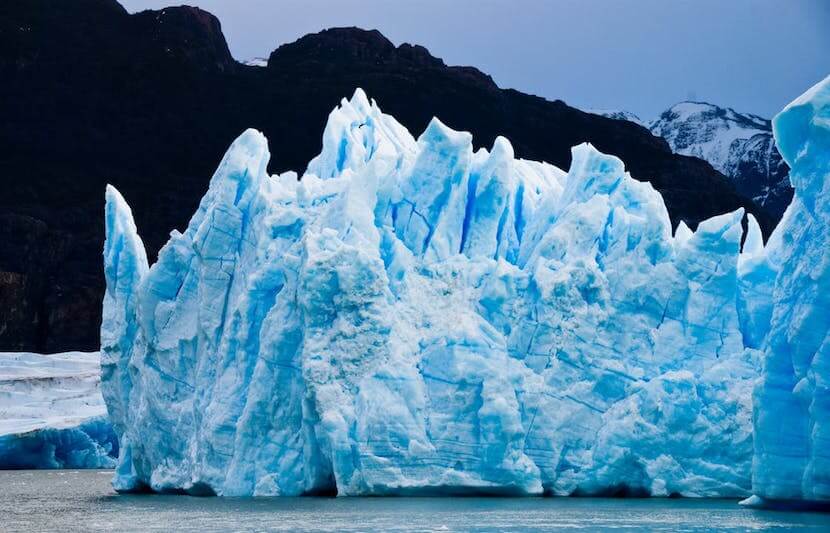Sea-level rise may be the biggest threat posed by climate change.
And that’s not breaking news.
When global temperatures rise, glaciers and ice caps begin to melt at an accelerated rate. The water that melts off the frozen structures funnels into the ocean and increases sea levels.
While melting ice isn’t the only factor that causes sea-level rise, it is a major contributor.
The sea had remained at a stable level for thousands of years, but global sea levels have risen nearly eight inches since 1900 and more than two inches in the past 20 years.
Scientists estimate sea levels could rise an additional three feet by 2300.
Sea-level rise is an immediate danger to the world. When water pours inland, it can destroy coastal habitats and ecosystems that house birds, fish and plants. Aquifers and agricultural soil can be contaminated, coast lines can erode, and there is an increased risk for deadly floods.
Higher sea levels also mean greater storm surges that can destroy homes, kill humans and animals, and displace hundreds of thousands of people living on the coast.
It sounds like something the world should try to avoid, right? Well, it might be too late.
Sea-level rise will continue long after greenhouse gas emissions are stopped.
And some ice caps are melting faster than ever before.
Unparalleled depletion of Russian ice cap
Over the past few years, Russia’s Vavilov Ice Cap has melted and slid drastically faster than it ever had before, researchers from the University of Colorado Boulder find.
The ice cap, which traditionally moved at speeds of two inches per day, was sliding as much as 82 feet a day in 2015.
“In a warming climate, glacier acceleration is becoming more and more common, but the rate of ice loss at Vavilov is extreme and unexpected,” Mike Willis, an assistant professor of geology at CU Boulder and lead author of the study, said in a statement.

In the 30 years before the speedup in 2015, the Vavilov Ice Cap only thinned by about 10 feet. But, in one year, from 2015 to 2016, the ice cap thinned by nearly 328 feet and lost enough ice to cover Manhattan in 250 feet of water.
Scientists have never seen acceleration in an ice cap of this magnitude. The findings have them worried that it could be happening to other major ice caps.
The researchers doubt that the ice cap will ever be able to recover its mass in this era of warming.
“We’ve never seen anything like this before, this study has raised as many questions as it has answered.” Willis said in a statement. “And we’re now working on modeling the whole situation to get a better handle of the physics involved.”
Mild warming could melt the world’s largest ice sheet
Global temperature rise of just 2 degrees Celsius would be enough to melt the East Antarctic Ice Sheet by several meters, researchers find in a new study.
Such rise in temperature is not very much, considering it is the goal set by the Paris Agreement.
Until now, scientists’ attention has primarily been focused on the western ice sheets in Antarctica, for many of them sit below sea level and are known to contribute the most to the continent’s melting.
“Antarctica is around twice the size of Australia, with ice sheets several kilometres thick and containing around half of the world’s fresh water,” Kevin Welsh, a scientist in the School of Earth and Environmental Sciences at the University of Queensland in Australia and co-author of the study, said in a statement.
“The East Antarctic Ice Sheet covers about two thirds of the area, and because its base is largely above sea level it was generally thought to be less sensitive to warming climates than the adjacent West Antarctic Ice Sheet,” he continued.
The researchers claim that the ice sheet had melted in the late Pleistocene period when temperatures were similar to those predicted for this century.
“We found that the most extreme changes in the ice sheet occurred during two interglacial periods 125,000 and 400,000 years ago, when global sea levels were several metres higher than they are today,” Welsh said in a statement.
“These periods could be analogues for future climates and it seems likely that ice loss from the East Antarctic Ice Sheet contributed to those higher sea levels,” he continued.
Conclusion
The threats posed by sea-level rise are staggering, and with an increase in glacial melting, the world can expect the sea to rise at accelerated rates.
The only thing humans can do is continue to lower their emissions.
“With current global temperatures already one degree (Celsius) higher than during pre-industrial times, future ice loss seems inevitable if we fail to reduce carbon emissions,” David Wilson a researcher from the Department of Earth Sciences at Imperial College London and lead author of the Antarctic study, said in a statement.



